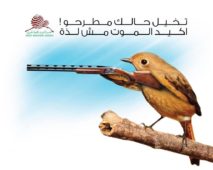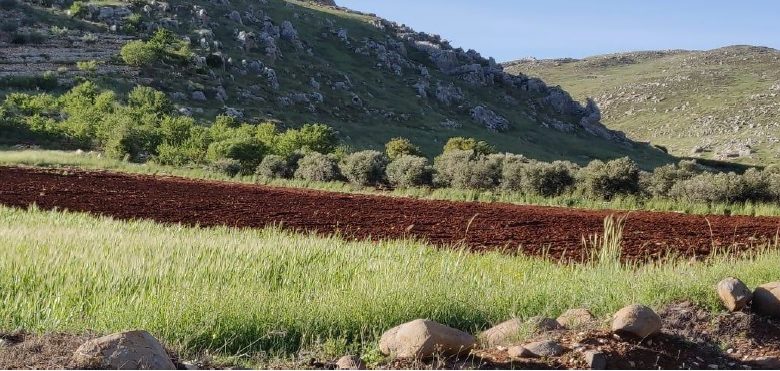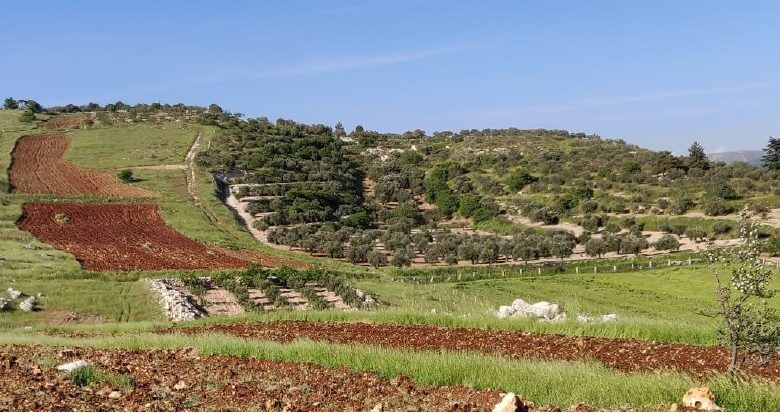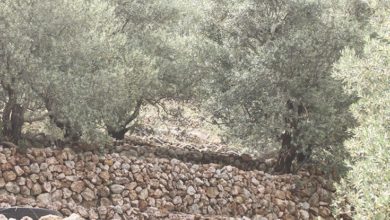Assessing the Biodiversity Value of Olive Sites in Mount Hermon KBA
Identifying the Environmental Impacts of Various Agricultural Practices” funded by the Critical Ecosystem Partnership Fund (CEPF) from 2019
Location:
The project is implemented in Caza Rachaya that is located in south east Lebanon as shown in the plate 1. Rachaya Caza is seated on the western slopes of Mount Hermon. It is located in the South Beqaa at 85 kilometers from Beirut, in the northern side of the Wadi el Taym valley.
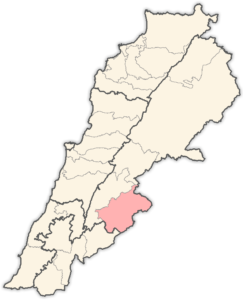
The area of the study is limited to the towns Rachaya, Kawkaba and Kfarmeshki as highlighted with green in the map of Rachaya Casa below. Rachaya Town stands at an altitude of 1,215 meters above sea level, Kawkaba at 1070 meters and Kfarmeshki at 1190 meters; all on the western slopes of the famous mountain Mount Hermon; whose summit rises to 2,814 meters above sea level and to be exact to 3,300 meters above the Beqaa-Ghor depression, which makes it the second highest mountain in Lebanon, somewhat lower than Qornet El-Sawda but higher than Sannine.

Objectives of the project:
1) Identify the Biodiversity value of the site,
2) identify the negative impact of the used agricultural practices on olive orchards and the ways of its minimization, and
3) convey the results to the concerned stakeholder to discuss future plans.
Early Project activities
- Identifying the gaps, if any, that need to be filled in order to identify the Biodiversity value of the site and identify the negative impact of the used agricultural practices on olive orchards and the ways of its minimization.
- Questioning people from the three areas (Rachaya, Kfarmishki and Kawkaba) about the types of olive grove farming (conventional, organic, semi-organic,..) and listening to their complaints and difficulties they face in their work.
- Participation in a meeting which took place at the Union of the Jabal El Sheikh Municipalities Federation, during which stories about best management of olive groves in the study area took a place on 10th of May 2019 with mayors and president of the Union of municipalities in presence of Dr. Saleem Hamada and Dr. Ghassan Ramadan-Jaradi. In this meeting a MOU was signed between Jabal El Sheikh Municipalities Federation and EFL to conduct the study about the biodiversity in the area of the Federation.
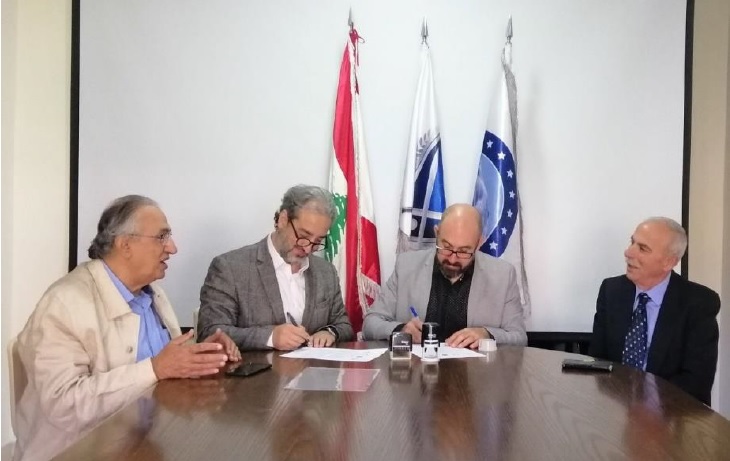
Overall Conclusion
- Biodiversity in Rachaya District was found rich and contains various species that are globally threatened and much more of species that are nationally threatened, including 8 species of 8 warblers that characterize the Mediterranean Biome.
You may request the study through sending an email to the following link:
- Biodiversity of the area is in need of protection and conservation efforts. Olive groves on slopes with degraded traditional stone walls or without stone walls, are characterized by eroded soils that lead to the poor functioning in plant species and thus the consumption by invertebrates and small vertebrates.
- Studies in Lebanon and elsewhere in Italy, Spain and Greece, showed that organic olive groves host about 40% higher species richness. It also shows that the organic olive cultivation and traditionally managed olive groves methods have a higher capacity to support biodiversity, since wild plants provide habitats, feed, and breeding resources for insects, mammals, birds and reptiles.
- The ground flora of olive groves is thus essential to support and conserve biodiversity in agricultural landscape for the future. To the ground flora adds the stratification of the olive trees where all participate in an association with the fauna as follow:
– Large, old trees – invertebrates, small mammals, reptiles, and birds
– Grassy understory – flora, invertebrates
– Stone walls and terraces – reptiles
– Patches of semi-natural vegetation on or off the farm – essential refuges for flora and fauna
In addition, these associations create great structural diversity and a rich ecosystem. Local studies illustrated this, but a Lebanese overview of the biodiversity value of the olive ecosystem is lacking.
-
- By restricting or forbidding tillage and promoting organic olive cultivation, not only biodiversity would be enhanced; this could also prevent further soil erosion and 56 create a more heterogenic agricultural landscape with higher biological and cultural values.
- Many factors appeared to be putting a pressure on the ecosystem and biodiversity of this area. The main drivers are of socio-economic nature such as:
– Abandonment of orchards due to immigration or search for more rewarding jobs
– Intensification of farming to increase incomes
– Modernization of practices to increase incomes
– Uncontrolled use of fertilizers, pesticides, herbicides, insecticides and agrochemicals in general.
– Planting on slopes without terraces
– Negligence of terraces and stone walls maintenance due to same reasons of abandonment or to poverty
– Un-appreciation of the role of grazing the understory of olive groves
The Top Priority Mitigation Measures needed as a result of Phase 1 study
- Adoption of High Nature Value farming system with low grazing impact on herbaceous.
- Understory and presence of a mosaic of semi-natural patches.
- Repair and maintenance of deteriorating traditional stone walls.
- Lowering management intensity of olive groves and reduce tendency towards irrigation.
- Reduce the use of pesticides whilst avoiding wide spectrum insecticides.
- Replace the use of herbicides by traditional and low intensity grazing or ploughing.
- Keep old trees in place as they are attractive to beneficial birds.
- Set a strategy to moving towards less “zibar” and better oil quality.
- Focus on organic olive oil as this is becoming more popular in Lebanon.
- Production of extra virgin olive oil, favored or not, is like organic olive oil, holds favorable prospects due to having a growing export potential.
- More studies are needed to protect traditional olive groves farming from intensified farming systems.
You may request the study through sending an email to
the following link: Contact us

